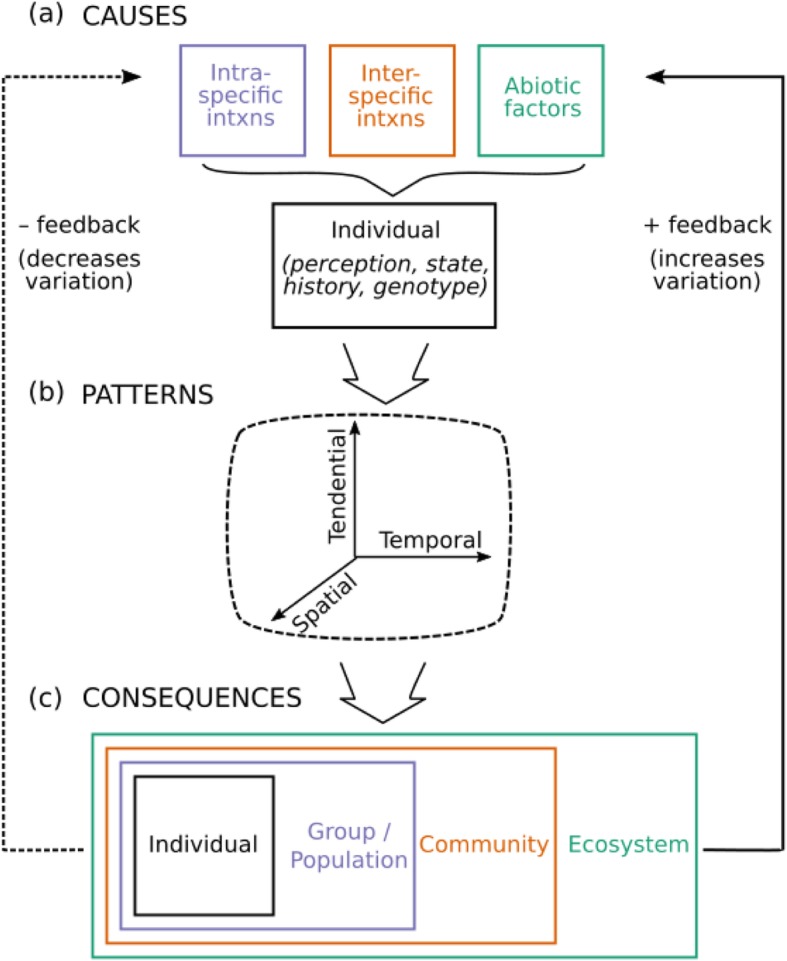Fig. 1.

Schematic of the causes, patterns and consequences of movement variation. a External factors (environment) are perceived by an individual, and taken in combination with its genotype, internal state and history to determine the movement response, (b) movement can vary along three ‘axes’ (whether to move, when to move, and where to move), and (c) movement first impacts the individual before potentially scaling up to affect the population, community and ecosystem. While causes often act in parallel, consequences are typically nested. Variation in any of the causes (or their interaction) can contribute to variation in movement, and moving in turn can feed back to affect variation if a consequence of moving is increasing variation in the causes of movement (positive feedback, solid arrow) or decreasing said variation (negative feedback, dashed arrow)
